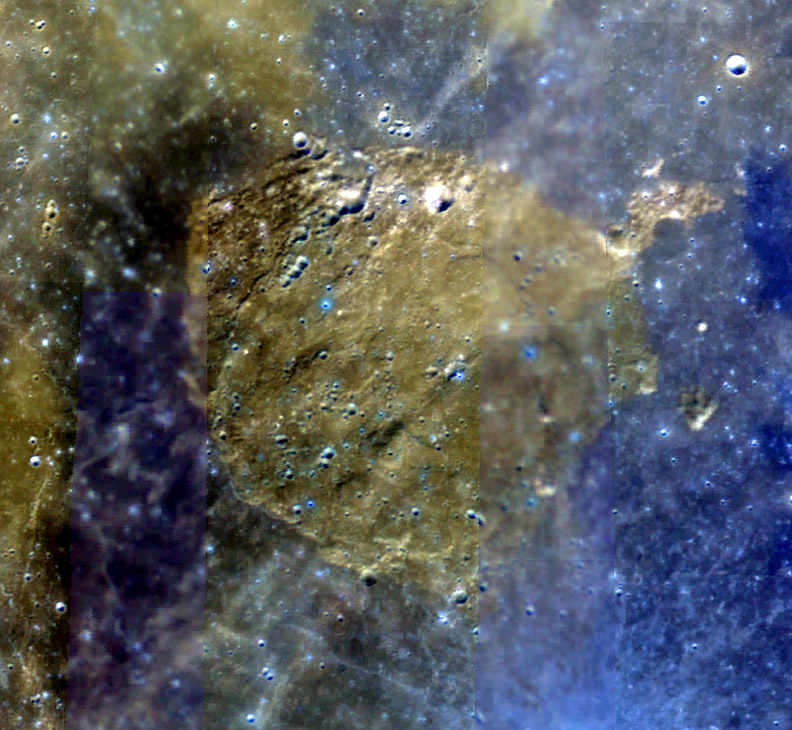
image from Clementine viaMap-A-Planet
Rümker is a peculiar mound at the far northern end of Oceanus Procellarum. It has low slopes and thus is invisible most of the time, and generally only inconspicuous when visible. Rümker is a broad dome peppered with smaller and steeper domes. The reason for its existence has always been unclear but may be related to the two other volcanic anomalies in northern Procellarum: Schröter’s Valley/Aristarchus Plateau and the Marius Hills. This Clementine color image above reveals things I didn’t know. In a normal visual image Rümker is the same hue as the surrounding mare and seems to be just a domed up part of it. But with the Clementine color composite image Rümker looks more like an ancient island fortress surrounded by a sea of blue. And that is what it is. The blue lavas have about 5% titanium and, according to crater counts, may be one of the youngest areas of the Moon with an age of about 1.33 b.y. Rümker has a higher density of craters and is thought to be about 3.4 b.y. old. The sharp color boundary between the brown of Rümker and the surrounding blue mare show that they have contrasting compositions and that there has been little mixing of the two. Rümker is not part of the surrounding Oceanus Procellarum lavas, it is older material sticking up through them and the slight scarp around its southern edge hints that it may have been pushed up. Another thing I didn’t know is that Rümker is two different ages. Recall that the center-north piece of Rümker is lower than the surrounding bumpy parts. This image shows that the low spot has many fewer craters - it must be considerably younger. And if you look closely you can see that the lower area has a tan color and the older bumpy material is darker brown. This indicates a slight difference in composition. Also notice that the older parts of Rümker have a strong SW to NE alignment of domes and subtle ridges - there is some structural alignment. If you put all these things together we know more about Rümker now than probably anyone else - its two ages and compositions, possible uplift and lineated structures. These things make the Rümker story more interesting - it's no longer just a lump - and should offer clues to its history.
Technical Details:
This is another case where Clementine image strips alternate being sharp and being blurred - does anyone know why that happened?
Related Links:
Rükl plate 8
GRL study of Rümker
Yesterday's LPOD: Not Quite a Rille
Tomorrow's LPOD: 20 M Resolution!
COMMENTS?
Register, Log in, and join in the comments.



